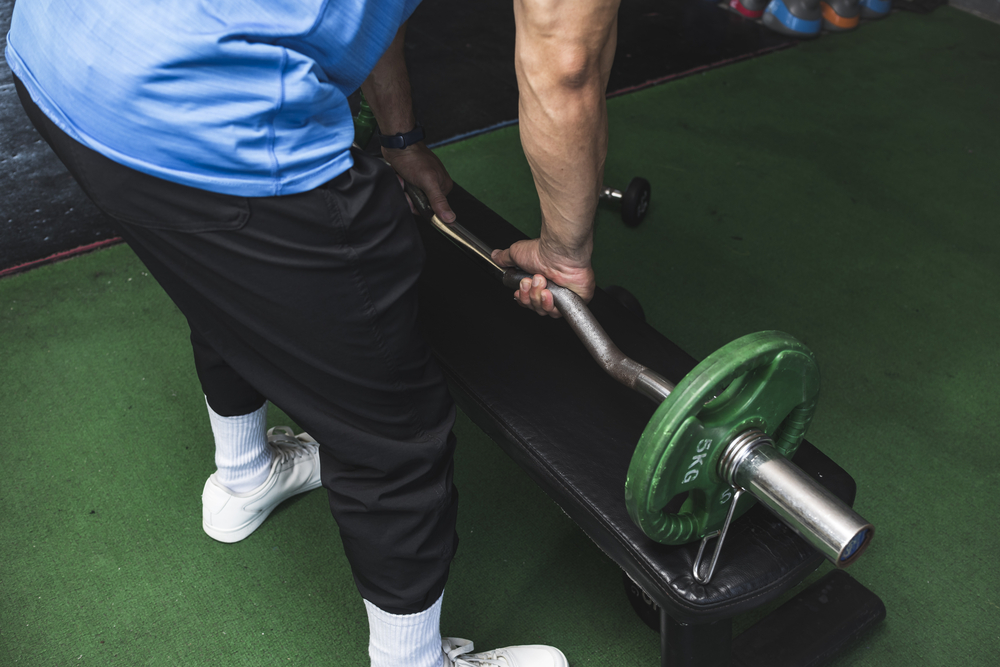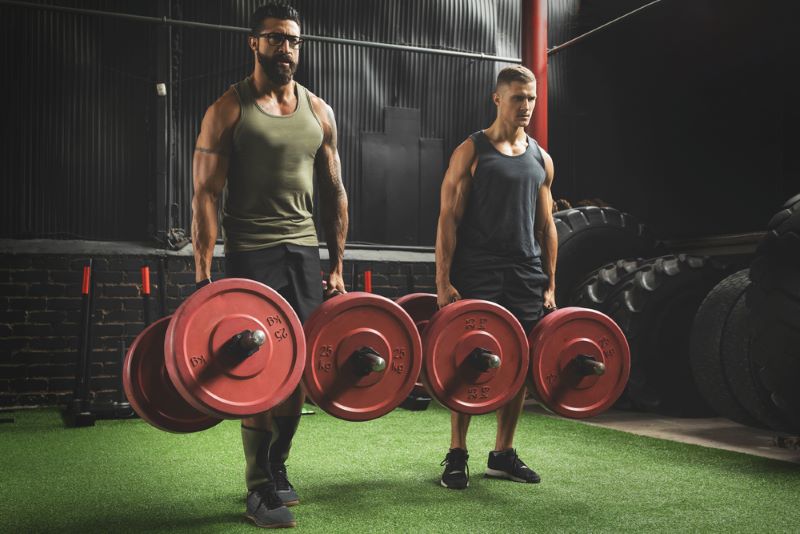If you’ve ever tried to build up your forearm muscles, you’ve probably tried reverse curls at some point.
Reverse curls are a great way to target the brachioradialis muscle, which runs from your elbow to your wrist and plays a key role in forearm flexion.
However, while they can be an effective exercise, they can also be painful if you’re not careful.
As someone who’s experienced wrist pain during reverse curls, I can relate to the frustration and discomfort that comes with it.
In this article, we’ll explore the reasons why reverse curls can hurt your wrists and provide tips to help you prevent it.

Understanding The Anatomy Of The Wrist
To understand why reverse curls can cause wrist pain, it’s important to have a basic understanding of the anatomy of the wrist.
The wrist is made up of eight small bones called carpals that are connected to the two forearm bones, the radius and the ulna. These bones are held together by strong ligaments that provide stability to the joint.
The wrist joint is also supported by muscles, tendons, and nerves that allow for movement and sensation in the hand and fingers.
One of the key muscles involved in reverse curls is the brachioradialis, which originates from the lateral supracondylar ridge of the humerus and inserts into the styloid process of the radius.
During reverse curls, the brachioradialis is activated as it contracts to lift the weight towards your shoulders. However, this movement can put a significant amount of stress on the wrist joint, especially if it’s not properly stabilized.
Another muscle that can contribute to wrist pain during reverse curls is the extensor carpi radialis brevis, which runs from the lateral epicondyle of the humerus to the base of the third metacarpal bone.
This muscle is responsible for wrist extension and can become strained if it’s overworked or if there’s improper form during reverse curls.
Why Do Reverse Curls Hurt Your Wrists?
Too Much Weight Being Lifted
One of the biggest causes of pain during any exercise is that too much weight is trying to be lifted.
During reverse curls, the weight will always be quite a bit lighter than the weight you can lift with standard bicep curls.
If you have too much weight on the bar during reverse curls, pain in your wrists is a very real possibility due to the excessive stress placed on them.
Incorrect Technique
Another one of the main reasons why people experience pain in their wrists during reverse curls is that their technique is incorrect.
If your wrists move out of position or you’re making errors elsewhere in your technique, reverse curls can cause pain in your wrists.
Small errors in technique can actually have some big impacts on injury risk so it’s very important that you get things right.
Injury
It could be that the pain felt in your wrists during reverse curls is a result of an injury to your wrist.
If you are feeling pain when you wouldn’t normally, it is worth getting a medical professional to take a look to make sure everything is ok.
Weak Grip Strength
Weak grip strength can also contribute to wrist pain during reverse curls.
When your grip strength is weak, your wrist may compensate by bending backward, causing pain and discomfort.
Arthritis
Finally, arthritis can be a potential cause of wrist pain during reverse curls, particularly for those with a history of arthritis or other joint-related conditions.
How To Reduce Wrist Pain When Doing Reverse Curls
Use Appropriate Weights
Reverse curls are particularly challenging for your lower arms.
Although they’re great at working your biceps, your lower arm muscles and your wrists will be placed under more stress than in other curl variations.
By selecting an appropriate weight for reverse curls (normally quite a bit lower than standard bicep curl weight), you stand a good chance of keeping your wrists comfortable and injury-free during the movement.
Use The Correct Technique
The technique for reverse curls is pretty easy to master.
However, even small errors can cause issues. So it is important that you’re 100% certain that your technique is correct.
Ensuring the correct technique is used throughout the exercise is vital to minimize the risk of injury.
(Here’s some common mistakes that you ought to avoid!)
Warm Up Properly
Before starting your reverse curls, make sure to warm up your wrists and forearms with some gentle stretching exercises.
This can help improve blood flow and increase flexibility, reducing the risk of injury.
Try Wrist Wraps or Support
Wrist wraps or support can help stabilize your wrists during the exercise, reducing the risk of injury. You can find wrist wraps at most fitness stores or online retailers.
Stretch and Cool Down
After finishing your workout, don’t forget to stretch and cool down your wrists and forearms.
This can help reduce soreness and improve recovery time.
Should You Still Do Reverse Curls If They Hurt Your Wrists?
The answer to this question does depend somewhat on the severity of any pain or discomfort felt.
What is important to remember is that exercise causes discomfort.
No matter what exercise you are doing, additional stress is placed on the working muscles and joints and this is not always a particularly pleasant feeling.
However, there is a difference between discomfort and pain.
Some levels of discomfort are normal during and after exercise.
Pain is not expected though.
If you feel pain at any point, you should stop what you are doing and assess the situation.
This is particularly important if you are feeling pain anywhere other than the working muscles.
Bones and joints shouldn’t hurt during exercise so any pain felt in these areas should be a cause for concern.
Alternative Exercises For Stronger Forearms Without Wrist Pain
Hammer Curls
Hammer curls are a great alternative exercise for building forearm strength without putting too much strain on your wrists.
This exercise involves holding dumbbells with your palms facing each other and curling them towards your shoulders.
By keeping your wrists in a neutral position, you can reduce the risk of wrist pain and discomfort.
Farmer’s Walk

The Farmer’s Walk is a functional exercise that not only strengthens your forearms but also your grip strength.
To perform this exercise, you need to hold a heavy dumbbell or kettlebell in each hand and walk for a certain distance or time.
The weight of the dumbbells will put tension on your forearms, helping to build strength.
Wrist Roller
Another effective exercise for building forearm strength is the wrist roller. This exercise involves rolling a weight up and down using only your wrist muscles.
You can use a dumbbell, barbell, or a dedicated wrist roller device to do this exercise.
Plate Pinches
Plate pinches are an excellent exercise for building grip strength and forearm endurance.
To perform this exercise, you need to hold a weight plate between your fingers and thumb and hold it for a certain amount of time.
You can increase the weight and duration as your grip strength improves.
Seeking Medical Attention for Persistent Wrist Pain
If you’ve been experiencing persistent wrist pain during or after your workouts, it’s important to seek medical attention.
As someone who’s dealt with wrist pain in the past, I know how frustrating it can be to not be able to train at full capacity.
I ignored my wrist pain for a long time, thinking it was just a minor injury that would heal on its own.
But the pain only got worse, and eventually, I had to stop lifting altogether.
After finally seeing a doctor, I learned that I had developed tendinitis in my wrist from overuse. I was prescribed rest, ice, and physical therapy to help with my recovery.
If you’re experiencing persistent wrist pain, don’t make the same mistake I did.
Consult with a medical professional as soon as possible to get an accurate diagnosis and proper treatment plan.
It’s better to take a break from training now than to risk causing further damage to your wrist in the long run.
Sources
I’ve been in the fitness and strength training industry for nearly a decade. In that time, I’ve gained 30 pounds of muscle, written hundreds of articles, and reviewed dozens of fitness supplements. As for my educational background, I’m a currently studying for my Active IQ Level 3 Diploma in Personal Training.

